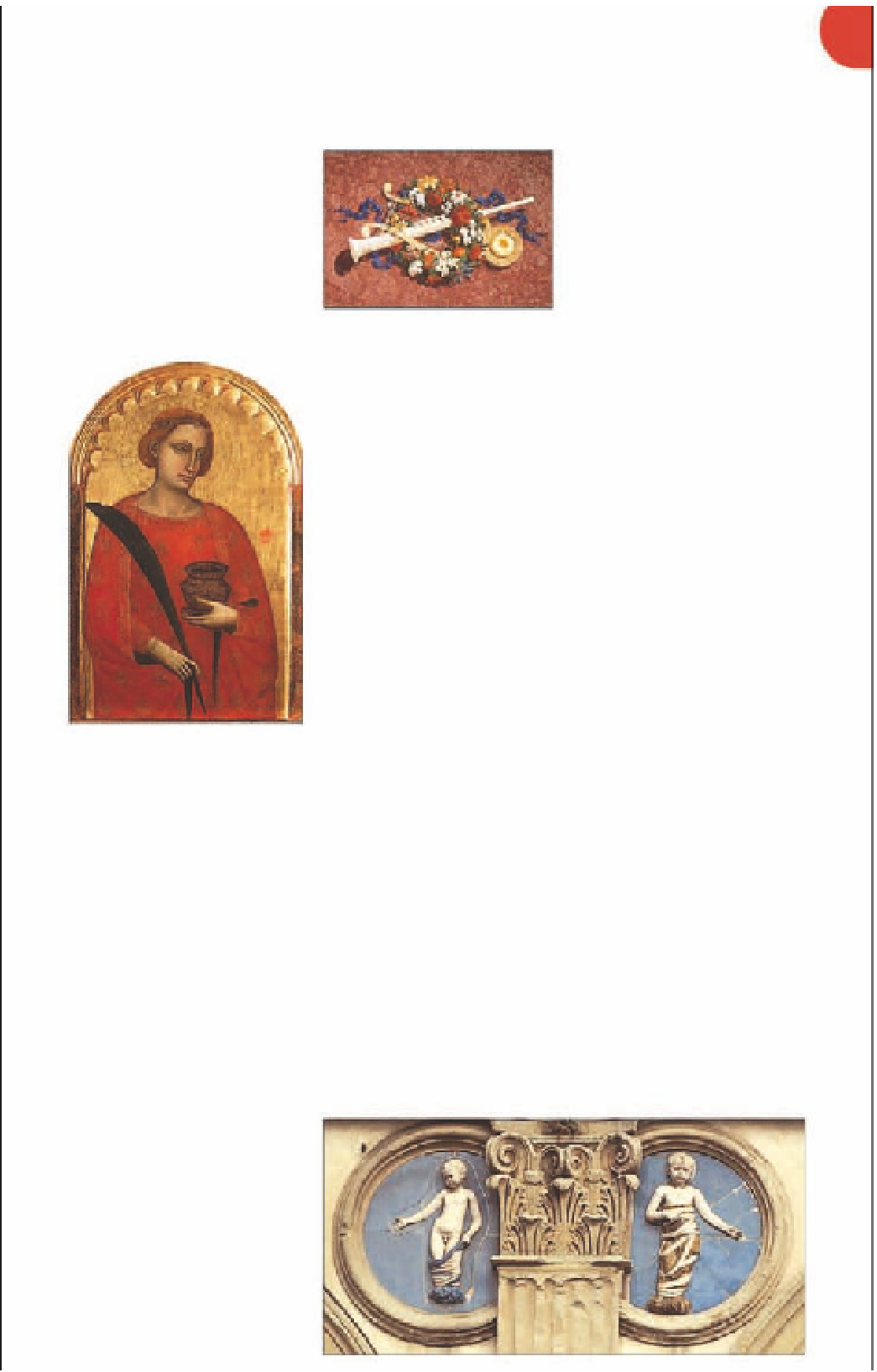Travel Reference
In-Depth Information
Spedale degli
Innocenti
w
Piazza della Santissima Annunziata 12
.
Map
2 D4 (6 F1).
Tel
055 249 17 08.
#
8:30am-7pm Mon-Sat, 8:30am-
2pm Sun; last adm 30 mins before
closing.
¢
1 Jan, Easter, 25 Dec.
&
^
This “hospital” is named after
Herod's biblical Massacre of
the Innocents following the
birth of Jesus. It opened in
1444 as the first orphanage
in Europe, and part of the
building is still used for this
purpose. UNICEF, the United
Nations Children's Fund,
also has offices here.
Brunelleschi's arcaded loggia
(see pp48-9)
is decorated
with glazed terracotta
roundels, added by Andrea
della Robbia around 1487,
showing babies wrapped in
swaddling bands. At the left-
hand end of the portico is the
rota
, a rotating stone cylinder
on which mothers could
place their unwanted children
anonymously and ring the
orphanage bell. The stone
was then turned around
and the child was taken in.
Within the building there
are two elegant cloisters built
to Brunelleschi's designs. The
larger Chiostro degli Uomini
(Men's Cloister), built between
1422 and 1445, is decorated
with
sgraffito
designs of
cherubs and roosters
scratched into the wet plaster.
The smaller Women's Cloister
(1438) leads to a gallery which
has several paintings donated
by children from the orphan-
age who became successful in
later life. Among these is the
Adoration of the Magi
(1488)
painted by Domenico del
Ghirlandaio, showing the
massacre in the background.
much of which is stylized and
heavily embossed with gold.
The Salone della Toscana
(Tuscany Room) is full of
19th-century sculpture and
paintings by members of the
Accademia, and a series of
original plaster models by the
sculptor Lorenzo Bartolini.
Born in 1777, he became
professor at the Accademia
in 1839, a post he held until
his death in 1850. His work
includes busts of major figures
such as the poet Lord Byron
and the composer Franz Liszt.
The conservatory has one of
the best music libraries in
Italy, holding many original
manuscripts by composers
like Monteverdi and Rossini.
Pietre dure
table (1849) by Zocchi
Opificio delle
Pietre Dure
q
Via degli Alfani 78.
Map
2 D4 (6 F1).
Tel
055 24 98 83.
8:15am-
2pm Mon-Sat (to 7pm Thu).
¢
#
public hols.
&
=
Situated in the former mon-
astery of San Niccolò, the
opificio
(factory) is a national
institute specializing in
teaching the Florentine craft
of producing inlaid pictures
using marble and semi-
precious stones. This tradition
has flourished since the end
of the 16th century, when
it was funded through the
patronage of the Medici Grand
Dukes, who decorated their
mausoleum with
pietre dure
.
There is a museum in the
same building displaying 19th-
century workbenches, tools,
vases and portraits showing
pietre dure
work. Several table
tops decorated with
pietre
dure
are on display: one inlaid
with a harp and garlands by
Zocchi, made in 1849,
another with flowers and
birds, designed by Niccolò
Betti in 1855. A stockpile of
exquisite marbles and other
semi-precious stones dates
back to Medici times.
Detail from 14th-century
Madonna
and Saints
in the Accademia
Conservatorio
Musicale Luigi
Cherubini
0
Piazza delle Belle Arti 2.
Map
2 D4
(6 E1).
Tel
055 29 21 80.
Library
¢
to the public.
Some of Italy's finest
musicians trained at this
musical academy, named after
the Florentine composer Luigi
Cherubini (1760-1842). The
conservatory owns a range of
ancient musical instruments,
now on display in the Palazzo
Vecchio
(see pp78-9)
. The
collection was acquired by
Ferdinando, the last of the
Medici Grand Dukes, and
includes violins, violas and
cellos made by Stradivari,
Amati and Ruggeri. There is
also a harpsichord by
Bartolomeo Cristofori, who in-
vented the piano in the early
18th century. He was
responsible for many of the
most important acquisitions.
Andrea della Robbia's roundels (c.1487) on the Spedale degli Innocenti





































